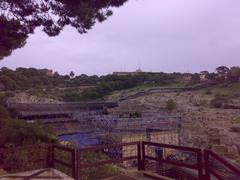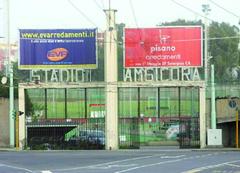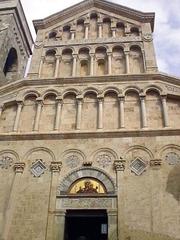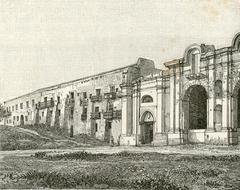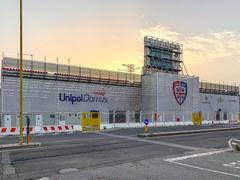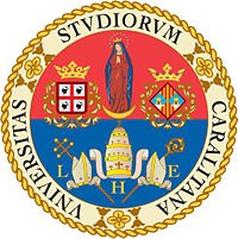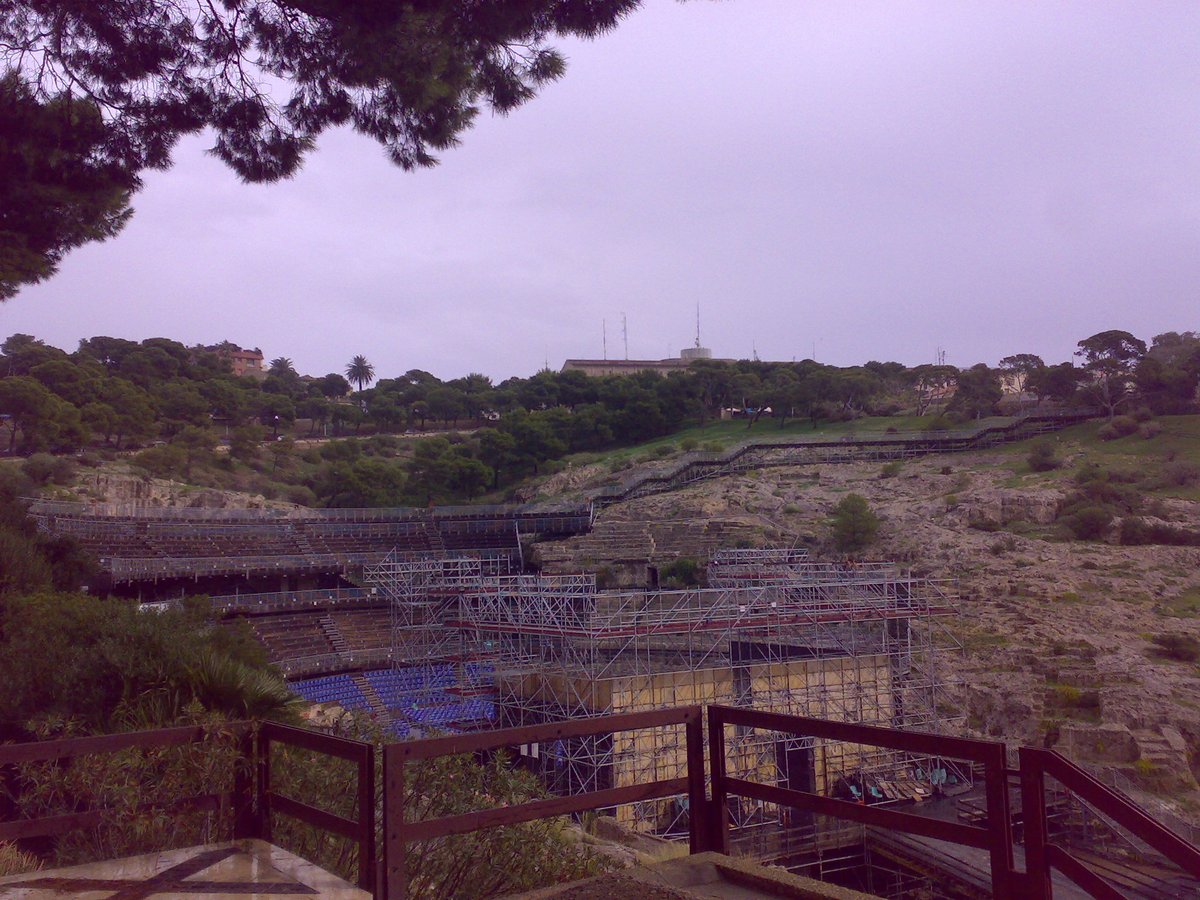
Roman Amphitheatre of Cagliari: Visiting Hours, Tickets, and Historical Significance
Date: 15/06/2025
Introduction
The Roman Amphitheatre of Cagliari stands as one of Sardinia’s most compelling historical monuments, offering visitors a vivid window into the island’s Roman heritage. Constructed between the late 1st and early 2nd centuries AD, the amphitheatre was ingeniously carved into the limestone slopes of Buon Cammino hill and further built up with locally quarried white limestone blocks. Capable of seating up to 10,000 spectators, its elliptical arena speaks to the architectural prowess of Roman engineers and the vibrant social life of ancient Carales (modern-day Cagliari). Today, the amphitheatre not only preserves its ancient grandeur but also plays an active role in the city’s cultural scene, hosting concerts, performances, and festivals (estateinsardegna.it; amongstromans.com).
This guide provides essential details for planning your visit, including up-to-date information on opening hours, ticket options, accessibility, and nearby attractions. Whether you are a history enthusiast or a casual traveler, the Roman Amphitheatre of Cagliari promises a memorable journey through time.
History and Architecture
Origins and Construction
The amphitheatre, built during the Roman Empire’s expansion into Sardinia, reflects both the strategic importance of Carales and Roman mastery of engineering. Its partially rock-cut design not only provided stability but also integrated the monument into the natural landscape. The remaining sections, constructed from white limestone, have helped preserve much of the structure’s original form (estateinsardegna.it).
The arena, measuring approximately 50 by 40 meters, was surrounded by tiered seating arranged according to social rank—a testament to the hierarchical structure of Roman society (amongstromans.com).
Role in Roman Society
The amphitheatre was the epicenter of public entertainment and imperial propaganda in ancient Cagliari. Gladiatorial games, animal hunts (venationes), and public executions were staged to reinforce social order and Roman values. Its proximity to other important sites like the Tuvixeddu Necropolis and the Castello district highlights its centrality in the urban fabric of Carales (try-travel.com; savoringitaly.com).
Transformation and Rediscovery
With the decline of Rome and the rise of Christianity, the amphitheatre’s use waned. Over centuries, it was repurposed and quarried for building materials, yet its core structure endured. Archaeological excavations in the 19th and 20th centuries led to its restoration and recognition as a cultural landmark (estateinsardegna.it).
Visiting Hours and Ticket Information
- Opening Hours: Typically open year-round, Tuesday to Sunday, from 9:00 AM to 7:00 PM in summer, with last entry one hour before closing. Hours may vary seasonally or during special events (islaguru.com; travellingking.com).
- Ticket Prices: Standard adult tickets range from €5–€7. Reduced rates are available for students, seniors, and children, with free entry for children under 12 or 18 (depending on eligibility). Combination tickets covering other museums or sites may be offered (Travelling King).
- Purchase Options: Tickets can be bought onsite or online. Booking in advance is advised, especially during peak seasons.
Accessibility and Visitor Amenities
The amphitheatre’s ancient terrain includes uneven surfaces and stone steps. While some areas have been made accessible with ramps and designated paths, certain sections remain difficult for visitors with limited mobility. It is recommended to wear sturdy footwear and bring sun protection and water, especially in summer.
Facilities include restrooms, multilingual information panels, a small gift shop, and vending machines. Guided tours are available in multiple languages, and audio guides or brochures can be requested for self-paced exploration.
Events and Contemporary Use
In addition to its archaeological importance, the amphitheatre serves as a dynamic venue for summer concerts, operas, and cultural events, continuing its ancient role as a public gathering space. Event schedules are available on the Cagliari tourism website and local information centers. Advance booking is recommended for event nights due to limited seating (Savoring Italy).
Nearby Attractions
Maximize your visit by exploring these nearby highlights:
- National Archaeological Museum: Home to artifacts from Sardinia’s Roman, Punic, and Nuragic periods.
- Orto Botanico di Cagliari: Botanical gardens featuring Mediterranean flora and Roman ruins.
- Villa di Tigellio: Remains of a Roman domus with mosaics and columns.
- Bastione di Saint Remy: 19th-century bastion with panoramic city and harbor views.
- Torre dell’Elefante & Torre di San Pancrazio: Medieval towers offering city vistas.
- Cagliari Cathedral: 13th-century cathedral with ornate interiors.
Practical Tips
- Best Times to Visit: Spring and autumn offer pleasant weather and fewer crowds.
- Getting There: Easily accessible on foot from the city center; CTM buses and nearby parking available.
- Language: Italian is primary, but English is widely spoken at tourist sites.
- Dress & Etiquette: Modest attire is recommended, especially when visiting churches; greet staff with a polite “Buongiorno.”
- Photography: Allowed for personal use; drones and professional equipment require prior authorization.
- Safety: Supervise children, respect signage, and avoid restricted areas.
Frequently Asked Questions (FAQ)
Q: What are the opening hours of the Roman Amphitheatre of Cagliari?
A: Generally, from 9:00 AM to 7:00 PM (Tuesday–Sunday), with seasonal adjustments. Confirm on official sites before your visit.
Q: How much do tickets cost?
A: Standard adult tickets are €5–€7, with reductions and free entry for eligible visitors.
Q: Are guided tours available?
A: Yes, guided tours in multiple languages are available and recommended.
Q: Is the site accessible for disabled visitors?
A: Some areas are accessible, but uneven ground and steps pose challenges. Contact ahead for specific needs.
Q: Are cultural events held at the amphitheatre?
A: Yes, especially during summer, with concerts and performances scheduled.
Enhance Your Visit
- Visuals: Seek out official tourism websites for high-quality images and virtual tours.
- Combined Tickets: Opt for combination passes to visit nearby museums and sites for better value.
- App Integration: Download the Audiala app for guided audio tours, event updates, and insider tips.
Summary and Visitor Recommendations
The Roman Amphitheatre of Cagliari offers a rare blend of ancient history and contemporary culture. Its impressive preservation, convenient location, and ongoing use as a cultural venue make it a must-see attraction for any visitor to Sardinia. Plan ahead by checking current hours and ticketing information, book tours for deeper insight, and explore surrounding historical sites for a well-rounded experience.
For the latest updates, event schedules, and travel tips, consult official tourism portals, download the Audiala app, and follow local resources on social media. Embark on your journey through Cagliari’s rich past and vibrant present!
